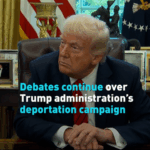Since 1973, the U.S. Endangered Species Act (ESA) has been a superhero cape for animals on the brink 🦸♂️—saving icons like the bald eagle and California condor from vanishing forever. But recent changes have sparked a fiery debate: Can wildlife protection and economic interests coexist?
In 2019, the Trump administration reshaped the ESA’s rules, allowing economic factors to weigh into decisions about which species get protected status. Imagine a 🎢 rollercoaster of policy shifts: Critics argue this could delay or block safeguards for vulnerable creatures, while supporters claim it balances conservation with business growth.
The stakes are high. Over 1,600 species in the U.S. rely on the ESA for survival. Yet, with climate change accelerating habitat loss, experts warn that weakening protections might tip ecosystems into chaos. 🔥 'This isn’t just about animals—it’s about our planet’s health,' says biologist Dr. Lisa Nguyen, comparing the ESA to a 'life support system' for biodiversity.
Globally, the ESA’s uncertainty raises questions: Will other countries follow suit? From Amazonian jaguars to African rhinos, international conservation efforts often look to the U.S. for leadership. 🌏 Meanwhile, youth-led climate movements are pushing governments to prioritize ecology over economics. Could Gen Z’s passion rewrite the script? 💬 Stay tuned.
Reference(s):
cgtn.com







